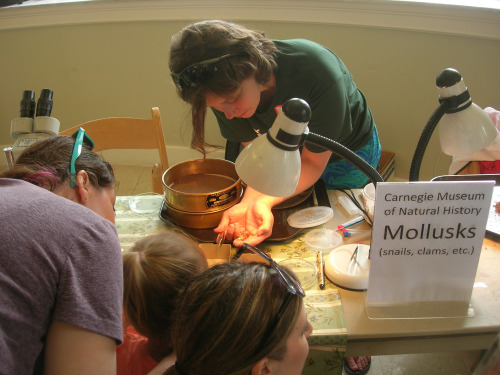
by Timothy A. Pearce
What lives in our city parks? A BioBlitz is a good way to find out. At a BioBlitz, biologists search in a defined area (such as a park) for a given amount of time (5 a.m. to 5 p.m. in this case) to find as many species as they can in their area of specialty. These biologists share their methods and finds with curious members of the public.
Phipps Conservatory organized a BioBlitz of Schenley Park, which neighbors Carnegie Museum of Natural History in Oakland, on June 5. Museum Curator Dr. Tim Pearce and museum volunteer Katie Zawrotniak headed the snail team and looked in leaf litter samples to find minute snails. They showed snail finds to about 50 visitors. Of the 13 species of land snails they discovered in the park, only one was non-native.
Land snails can be used as an indicator of park’s health (T.A. Pearce. 2009. Land snails as indicator species: examples from seven bioblitzes in the eastern United States. Tentacle, Mollusk Conservation Newsletter, number 17: 12-14). Surprisingly,
compared to other city parks, this was a very low proportion of non-native species. Although the number of species was relatively low, these results suggest that Schenley Park is moderately healthy from the perspective of the land snail community.
Timothy A. Pearce, PhD, is the head of the mollusks section at Carnegie Museum of Natural History. Museum employees are encouraged to blog about their unique experiences and knowledge gained from working at the museum.
